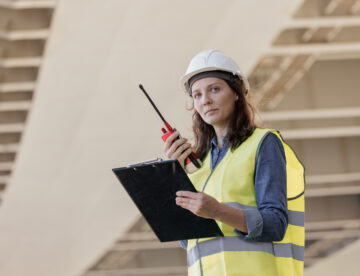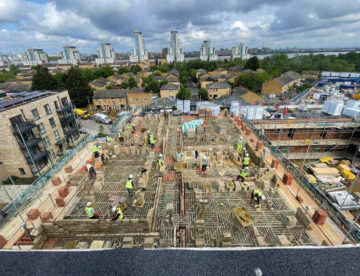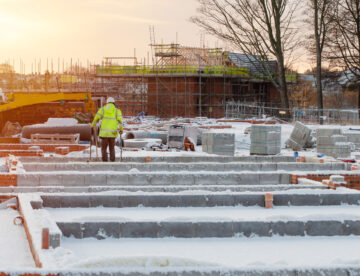
Cyber security threats are escalating across the UK, with more than 40% of businesses and 30% of charities reporting breaches over the past 12 months. Even household names like Marks & Spencer, Co-op and Harrods were recently forced to suspend online operations to contain cyber-attacks.
This surge highlights that cyber-crime is happening right now and it could affect anyone. For organisations, the consequences can be particularly severe, including financial losses, reputational damage and operational disruption. Take a look at this week’s blog to find out what this means for our industry and what Sheriff Construction is doing to protect your data.

As we approach International Women’s Day 2025, the call to ‘Accelerate Action’ for gender equality has never been more urgent. It’s a time to take decisive steps toward creating more inclusive and equal opportunities, particularly in industries that have long been dominated by men.
The construction sector, in particular, is one where gender equality could actually be crucial for future growth and success. One significant initiative making strides in this area is the Women into Home Building programme. Take a look at this week’s blog to learn more.

Last week, the Labour government presented its first Budget for the country in 14 years, introducing a range of measures that they claim will restore stability to the nation’s finances while investing in public services.
As she delivered this Budget, Chancellor Rachel Reeves used building analogies like ‘fix the foundations’ and ‘rebuild Britain’, but what will the changes mean for construction and the built environment? In this week’s blog, we’ll outline some of the key points.

The Home Builders Federation (HBF) has recently announced the launch of a fifth round of its successful Women into Home Building programme, designed to attract more women into site management roles within the construction industry.
Partnering with ten leading homebuilders, the programme offers over 30 training opportunities, support services and work placements to aspiring female site managers. Find out more in this week’s blog.

Falling from heights is the number one cause of fatal and non-fatal incidents in the construction sector in the UK. That’s why it’s really important for construction companies like ours to keep up with advancements in safety technologies.
Among the numerous innovations that are happening in our industry, G decking has emerged as something of a game-changer, not only reducing the risks associated with working at heights but also streamlining workflows and boosting overall productivity. Read on to find out more.

The latest study into the world’s costliest places for construction has placed London at the very top of the list.
Looking at 100 of the world’s largest cities across six continents, the latest Arcadis International Construction Costs (ICC) report ranked London first, ahead of Geneva, Oslo, New York City and then Copenhagen. Find out more in this week’s blog.

New rules that came into play this week mean that developers in England now have to deliver 10% Biodiversity Net Gain when building new housing, industrial or commercial developments.
This makes England the first country in the world to make Biodiversity Net Gain a legal requirement so take a look at this week’s blog to find out more about what this means and how it will be implemented.

While construction has long been known for its focus on hard work and technical expertise, research suggests that one of the key strengths of our industry comes from it having embraced a broader range of thinking styles and experiences beyond the ‘typical’.
A new study by the Association for Project Management (APM) has revealed that almost half (46%) of construction professionals identify as neurodivergent, compared to a cross-sector average of 31%. Read on to find out more about what this means and the potential benefits this offers for our industry.

As the world grapples with challenges like climate change and economic uncertainty, the construction industry is adapting and innovating at an unprecedented pace, so for this week’s blog, we’re asking what’s in store for 2024?
From technological advancements to an increased focus on the adoption of sustainable materials and practices, here are just three thought-provoking trends to watch in the coming year.

After a few chilly early mornings and, as we’re likely heading into the coldest months of the year, it’s time once again for the construction industry to brace itself against the full impact of winter.
Working outdoors in rain, snow, ice, fog or wind can be harsh, however there are practical solutions which can help ensure such work is carried out productively and that every site worker stays safe and healthy. Take just a few minutes out of your day to read this week’s blog, where we’re sharing three strategies for weatherproofing the construction site.
